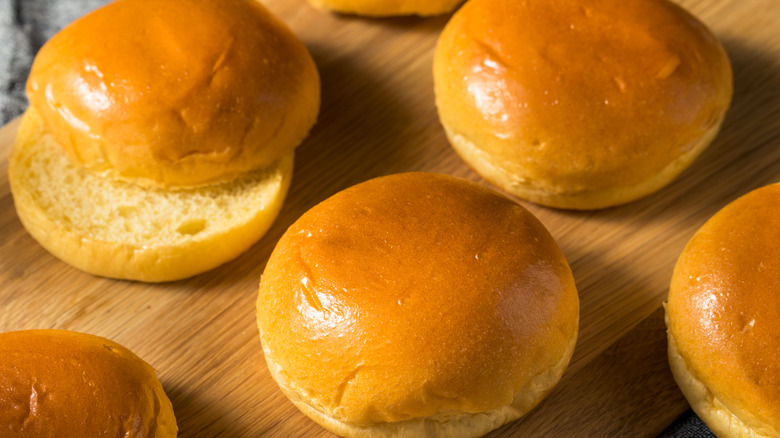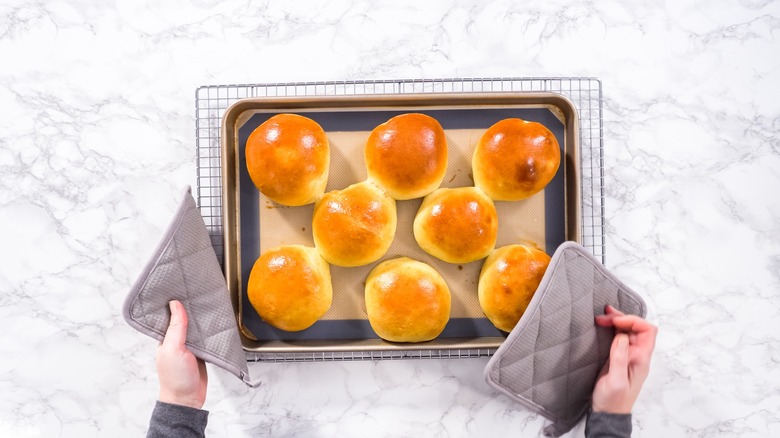The Tap Test To Check If Your Homemade Brioche Is Done
Brioche is ideal for savoring a slow morning, whether you eat a slice plain or as ultra-fluffy French toast. If you'd rather keep things savory, brioche rolls alternatively make for tasty hamburger buns certain to spruce up your next barbecue. Brioche — which uses butter, unlike challah — typically consists of flour, sugar, yeast, milk, and eggs. With this base, you can enjoy your brioche exactly as is. Or, you can dress it up with your favorite flavors.
Chocolate brioche makes for a chocolate lover's dream. Meanwhile, Sicilian brioche truly doubles as dessert when paired with granita, per La Cucina Italiana. While there are plenty of ways to enjoy your brioche, making it is another story. Brioche is a complex bread that follows a difficult process. According to MasterClass, you should steer clear of old yeast and be careful to time the addition of your butter. If you add butter in too soon, you may disrupt the formation of gluten.
Yet even once you've perfected your dough, there's the matter of the bake. When you start adding in fun ingredients like chocolate, your brioche won't necessarily turn the golden brown shade MasterClass recommends looking out for. So determining when the bread is done becomes all the more challenging. Luckily, there's one simple way to know when your brioche is ready-to-serve. This strategy has nothing to do with how your bread looks and everything to do with how it sounds.
Listen to your brioche before you taste it
The best way to tell if your brioche is ready-to-eat? Give it a knock. Yes, The Spruce Eats recommends the tap test, urging at-home brioche bakers to do as the name suggests. If you'd rather rely on your ears than your eyes, simply tap the bottom of your brioche buns. If the bread sounds hollow, it's ready to leave the heat and enter your plate. King Arthur Baking similarly suggests this unique method, which works especially well for large, rounded loaves of brioche.
You can alternatively look for a deep brown shade, or remove the mystery altogether by testing your bread's temperature with a thermometer. Once it reaches 190 degrees Fahrenheit, it should be done. However, King Arthur Baking warns that the color of brioche can be deceiving, since the bread browns fairly quickly, so your ears may actually be the more reliable sense. Once your tap test proves successful, let your brioche cool for 10 minutes prior to serving. With brioche on the menu, bread never sounded so sweet.

